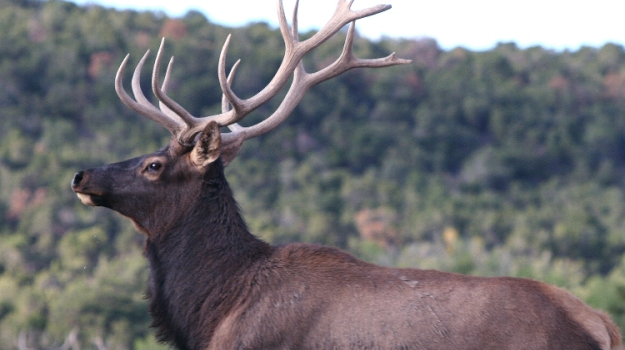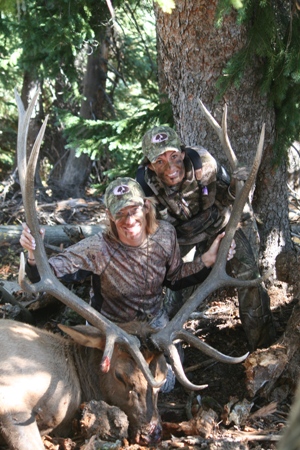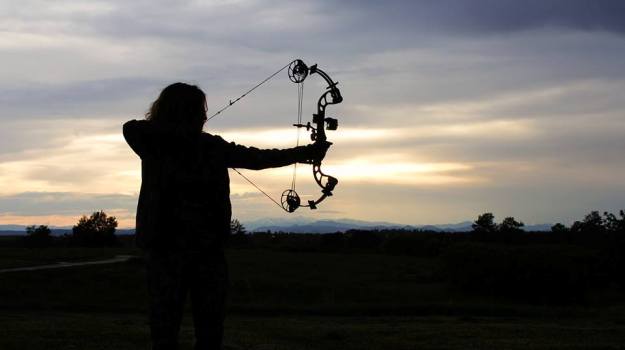
Dave and I almost became obsessed with gathering hunting information and trying to help do-it-yourself hunters increase their odds for success. Just this past year we added harvest sites for goat, sheep, moose and lions with specific recommendations of where your chances are best to take these animals in our database, and we have about 13,000 kill sites in that database. If you'd like to see the type of hunting information that we’ve collected, go to www.huntdata.com. You'll also find maps that show locations of public and private lands, overlays to show where the largest concentration of elk are in each unit, and where the public land is available in each unit.
Working with the data we were collecting, I discovered I could plan a very-inexpensive elk hunt. I wouldn’t need to hire a guide, and I wouldn’t have to hunt private land. Over the last 14 years, my family and friends that I've guided for have seen elk 95 percent of the time we've hunted, and we’ve harvested elk 50 to 65 percent of the time on those hunts. So, I use the information to hunt smarter, hunt cheaper and become more successful. Today and each year, I look at the preference points that I have for each unit that I may want to hunt and the time of year that I want to hunt. Then I look at the units holding the most elk during the time I want to hunt with the preference points I've accumulated and learn the amount of public lands I’ll have to hunt. So, I rely less on luck and more on technology to find better elk hunting for me, my friends and my family.
 I define a blue-collar elk hunter as a person who studies all the research they can find about where they can and want to hunt, goes to his or her hunt site several days before the season and sets-up a tent camp. Then he scouts and uses his woodsmanship and the technology available to locate and harvest the type of elk they’ve come to hunt. The blue-collar hunter doesn’t hire a guide who has all the equipment set-up when he gets to camp and does all the guiding to find the elk.
I define a blue-collar elk hunter as a person who studies all the research they can find about where they can and want to hunt, goes to his or her hunt site several days before the season and sets-up a tent camp. Then he scouts and uses his woodsmanship and the technology available to locate and harvest the type of elk they’ve come to hunt. The blue-collar hunter doesn’t hire a guide who has all the equipment set-up when he gets to camp and does all the guiding to find the elk.
Dave and I want to be as efficient as we can be at finding and taking elk, because wild game is the meat that our family prefers, and elk is a major staple in our diet. Eating wild meat is the healthiest and the most-natural meat people can eat, because it hasn’t been fed steroids or injected with any outside substances. That’s why I have no hesitation in taking a cow when I’m elk hunting. Personally, I've only harvested three bulls. However, I've called in 30 bulls that have been harvested by family members and friends. I just love to hunt and call elk, and I want to go hunting every chance I get. Who takes the bull isn’t nearly as important to me as getting that bull into a position where he can be harvested. I've been successful in finding and calling in bulls 50 to 65 percent of the time that I’ve hunted and called for friends and family.
Last year my hunting partner, Lisa Thompson, and I hunted 10 different elk units in Colorado that we never had hunted previously. We wore Fitbits that recorded the number of miles we traveled. At the end of the season, we had logged 250 miles of walking during those 10 hunts. On 7 of those 10 hunts, we got within 100 yards of a branched antlered bull. However, we’re both bowhunters. Even though we saw those bulls, they weren’t within bow range.
To learn more about hunting in Colorado, Wyoming and Arizona, go to www.huntdata.com, and you can see a wealth of information available for each state. The State of Utah will be added in August.
Gather Information Yearly to Increase Odds for Taking an Elk



























